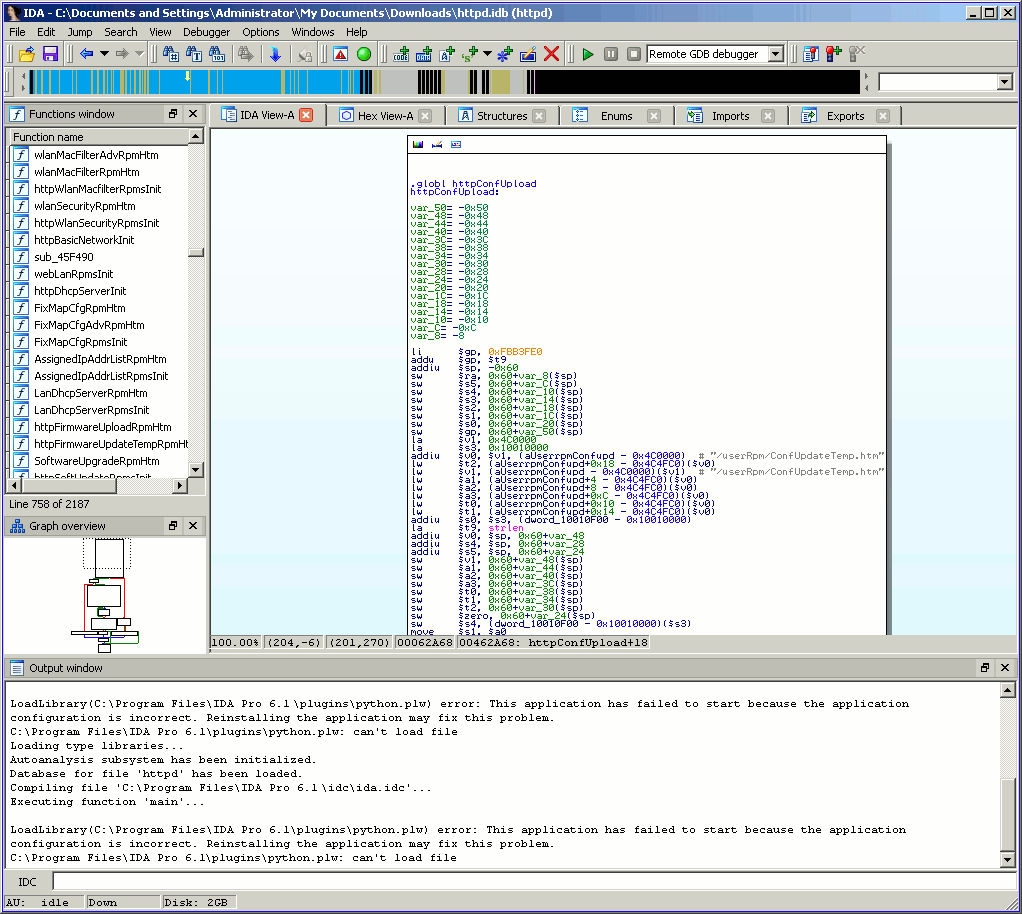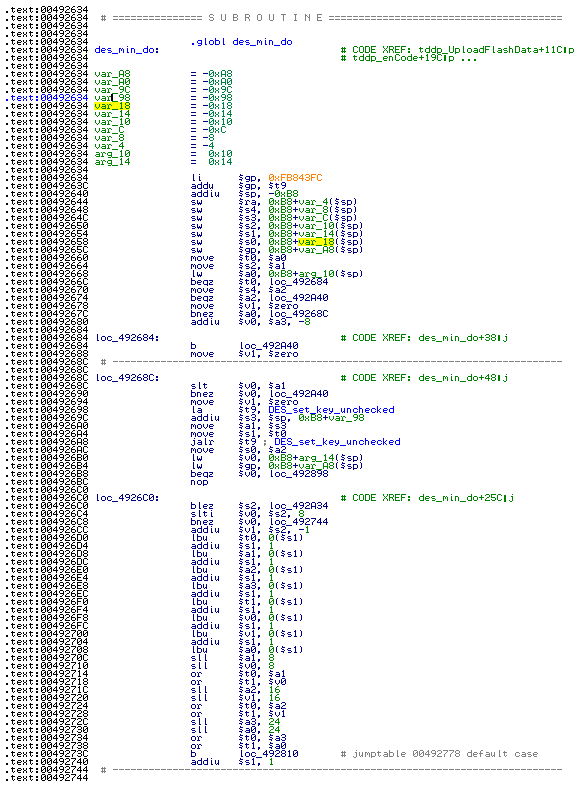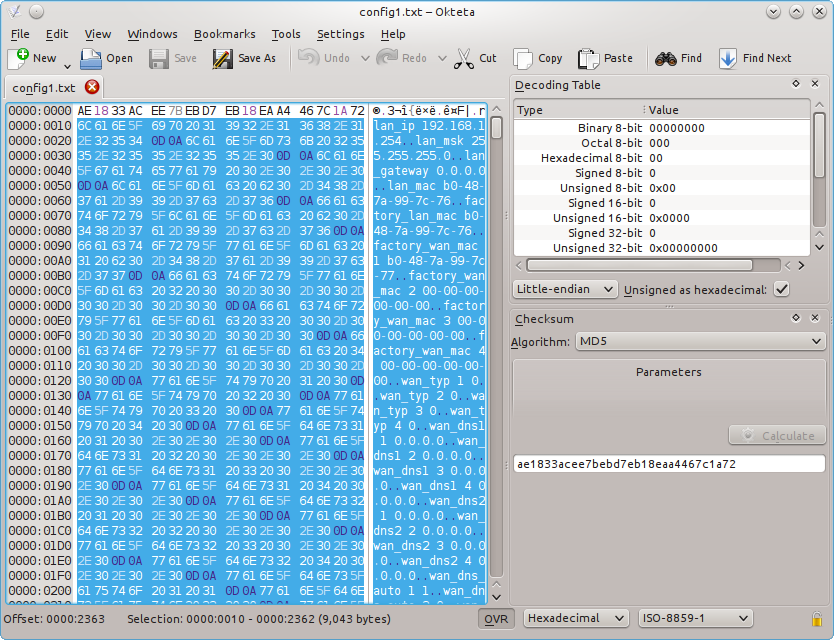TP-Link configuration file decrypt
Some routers allow to save and restore the configuration from a file locally.
This is nice because by saving the configuration, altering the file and upload it again,
you can change settings not exposed in the interface.
For example, on my D-Link DSL-2640B
I could disable a broken QoS which was slowing down the download speed just by setting X_BROADCOM_COM_ATMEnbQos to FALSE.
When I got a TP-Link wireless access point, I tried the same trick but I’ve found that they started encrypting the configuration file, making it impossible to edit manually.
So I decided to reverse engineer it.
First of all I needed a dump of the filesystem to get the binaries, so I soldered a serial port on the router to access the bootloader.
The bootloader doesn’t allow to interrupt the boot process but luckily I knew that on those devices you can get a prompt by typing the secret word tpltpltpl.
AP93 (ar7240) U-boot
DRAM:
sri
#### TAP VALUE 1 = 9, 2 = 9
32 MB
id read 0x100000ff
flash size 4194304, sector count = 64
Flash: 4 MB
Using default environment
In: serial
Out: serial
Err: serial
Net: ag7240_enet_initialize...
No valid address in Flash. Using fixed address
: cfg1 0xf cfg2 0x7014
eth0: 00:03:7f:09:0b:ad
eth0 up
No valid address in Flash. Using fixed address
: cfg1 0xf cfg2 0x7214
eth1: 00:03:7f:09:0b:ad
ATHRS26: resetting s26
ATHRS26: s26 reset done
eth1 up
eth0, eth1
Autobooting in 1 seconds
ar7240>
I’ve compiled an OpenWrt initramfs image and loaded it via tftp:
ar7240> tftp 0x81000000 openwrt-ar71xx-generic-tl-wr841n-v8-initramfs-uImage.bin
ar7240> bootm
Booting an initramfs firmware, gives you a running Linux system with root access,
but without altering anything on the flash.
At this point it’s possible to dump the root partition and then get it via SSH:
# cat /dev/block/mtd2 >/tmp/rootfs
# scp /tmp/rootfs matteo@192.168.1.2:
The filesystem is an ancient squashfs version, unsupported by modern squashfs tools, so I had to compile an old release to extract it with unsquashfs.
In the extracted filesystem I located the directory containing the web interface pages.
Looking at the web page which handles the configuration,
I noticed some custom tags that references to some sort of embedded functions.
Most likely they are handled server side by the webserver.
The webserver is an “httpd” binary which has many symlinks pointing to it, so it can provide many utilities.
This is a common practice in limited constrained systems, most notably in the BusyBox project.
I started IDA to look at this binary, clearly httpConfUpload was the function to start hacking from.

Given a reference to des_min_do and some strings starting with DES_ I suspected that DES is the cypher used to encrypt the file.
Furthermore, it has lot of bitwise operators and loops, common for cryptographic function:

Before calling this function, on the stack is pushed a pointer to a constant null terminated string. It could be some salt or key passed to the encryption function as an argument so I noted this string which was 478DA50BF9E3D2CF.

I tried to decrypt it with mdecrypt using that string as key but without success:
$ mdecrypt -b -a des -f key <config.bin
I looked again at the binary and I searching for the _des string I found md5_des which suggested me to use the md5 hash function:
$ mdecrypt -b -a des -f key -o mcrypt-md5 <config.bin
Again no luck, so I tried all the block modes available until I found that the correct one was ecb:
$ mdecrypt -b -a des -m ecb -f key -o mcrypt-md5 <config.bin
????????????????lan_ip 192.168.1.254
lan_msk 255.255.255.0
lan_gateway 0.0.0.0
The file is decrypted! The garbage before the plain text is the md5 of the file, if I calculate it with my hex editor it matches:

the same can be done with openssl:
$ openssl enc -d -des-ecb -nopad -K 478DA50BF9E3D2CF -in config.bin
I succeeded in decrypting the TP-Link configuration file, now it’s possible to edit it manually.
Have fun!